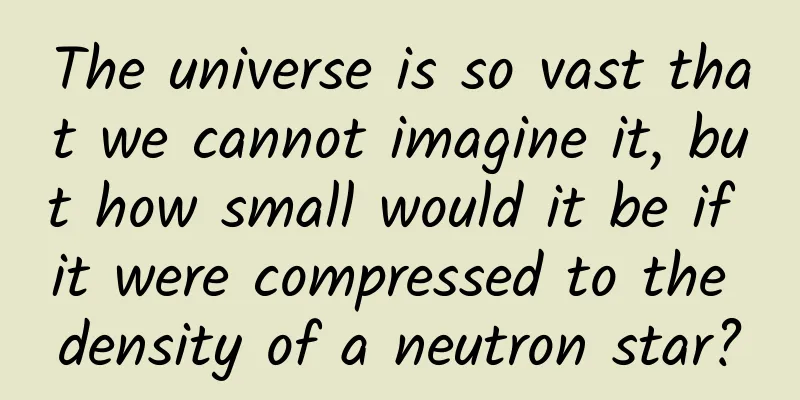This piece of ancient glass holds the secret of water on Mars!

|
The author or source of this article or its original publication: Bokeyuan official website: www.bokeyuan.net And mobile software: Bo Ke Yuan There is a piece of glass, minerals and rocks the size of an ancient coin and about the same thickness as a wool fiber. It is a Martian meteorite, called Northwest Africa 7034 or Black Beauty, which was formed by a huge impact that glued together different parts of the Martian crust. Barnes, an assistant professor of planetary science at the University of Arizona's Satellite and Planetary Laboratory, and her research team conducted chemical analysis of the Black Beauty meteorite and the famous Allan Hills 84001 meteorite to reconstruct Mars' water resource history and planetary origins. However, in the 1990s, the two meteorites were controversial for allegedly containing Martian microbes. The results of the research were published in the journal Nature Geoscience. The analysis shows that Mars may have obtained water from at least two very different sources early in its history. The variability found by the researchers means that, unlike Earth, Mars never had a magma ocean that completely surrounded Mars. These two different sources of water in the interior of Mars may tell us something about the types of objects that can aggregate into inner rocky planets. Understanding Martian Water Two very different planetary bodies with very different amounts of water could collide and never fully mix. This context is also important for understanding Mars' past habitability and astrobiology. Many scientists have been trying to figure out the history of water resources on Mars, such as, where did the water come from? How long has it been on the crust (surface) of Mars? Where did the water in Mars' interior come from? What can water tell us about how Mars formed and evolved? The research team was able to piece together the history of water on Mars by looking for clues in two isotopes of hydrogen. One hydrogen isotope contains one proton in its nucleus and is called "light hydrogen." Another isotope, called deuterium, contains one proton and one neutron in its nucleus and is called "heavy hydrogen." The ratio of these two hydrogen isotopes signals to planetary scientists about the process and possible sources of water found in rocks, minerals and glass. For about 20 years, researchers have been recording isotope ratios in Martian meteorites, and the data are all over the place with little seeming trend. Meteorite Mystery The water locked in Earth's rocks is so-called ordinary water, meaning it does not deviate from the standard reference value for seawater, which is a ratio of 1:6420 of heavy hydrogen to light hydrogen. The Martian atmosphere, on the other hand, is heavily fractionated, meaning it consists mostly of deuterium, or heavy hydrogen, most likely because the solar wind carries away the light hydrogen. With measurements from Martian meteorites covering the difference between measurements of the Earth and Martian atmospheres (many of which were knocked out of deep Mars by impact events), the team set out to study the hydrogen isotope composition of the Martian crust. Specifically, by studying samples from the Martian crust: the Black Beauty meteorite and the Allan Hills meteorite. Black Beauty is particularly useful because it is a mixture of surface material from many different periods in Mars' history. This gives scientists an idea of how Mars' crust formed over billions of years. The isotopic ratios of the meteorite samples fall between those of Earth rocks and the Martian atmosphere, and when the researchers' findings are compared with previous studies, including those of the Curiosity rover, it appears that this has been the case for most of Mars' 4 billion-plus years of history. The team was struggling to explain why the crust looked so different from the Martian mantle, which is the rock that came later and lay beneath. If you try to explain this fairly constant isotope ratio in the Martian crust, you can't use the atmosphere to explain this. But knowing how crusts form, they form from molten material from the interior that solidified on the surface. Before the researchers began this work, the prevailing assumption was that the interior of Mars was more Earth-like and intact, so the variation in hydrogen isotope ratios in Martian samples was either due to terrestrial contamination or because it was injected with atmosphere as it left Mars. The idea that Mars' interior composition is similar to Earth's came from a study of Martian meteorites, which are thought to originate from the mantle, the interior between the planet's core and the surface crust. However, Martian meteorites are basically everywhere, so trying to figure out what these samples actually tell us about water in the Martian mantle has historically been a challenge. The fact that the crustal data are so different led to a careful review of the data, which revealed that two geochemically different types of Martian volcanic rocks (enriched shergottites and depleted shergottites) contain water with different hydrogen isotope ratios. The study found that the enriched shergottite contained more deuterium than the depleted shergottite, which is more Earth-like. It turns out that if you mix the different ratios of hydrogen from the two shergottites together, you can get information about the Earth's crust. The researchers believe that the shergottite records the signatures of two different hydrogen species within Mars, and this clear difference shows that there may be more than one source that provided water to Mars. Boco Park | Research/From: University of Arizona Reference journal Nature Geoscience BoKeYuan|Science, technology, research, popular science Follow [Bokeyuan] to see more beautiful cosmic science |
<<: National Geography of Braised Pork
>>: Heart rate affects life expectancy! Doctor: The best heart rate is within this range
Recommend
Stocking up on toilet paper during shopping festivals, how much is the rent worth of the floor space?
Toilet paper, tissue paper, facial tissue...are y...
The "money prospects" of the Internet of Vehicles attract giants to compete for the rapid development of intelligent connected vehicles
Recently, the Ministry of Industry and Informatio...
Why are today’s young people starting to become “at a loss for words”: they forget the words they speak and the characters they write?
If you were asked to give a compliment to your fr...
How much does a piece of Cordyceps sinensis cost in 2020?
How much does a piece of Cordyceps sinensis cost ...
People who don't get seriously ill generally have these common characteristics! Many people can't do the first one!
Having a healthy body and being less sick is ever...
Yiche Ranking: BYD is the top-selling brand in Guangdong Province in January 2025, with a total of 22,915 vehicles sold
Yiche.com released the sales rankings of automobi...
Shenzhen's pragmatic new policy on online ride-hailing services leaves room for new species to explore
Since the "Implementation Opinions of the Sh...
Fengjie teaches you how to write 10w+ stories
Fengjie’s article became popular. The article &qu...
Internet videos boost the popularity of TV boxes, but it is difficult to balance control and content
With the popularization of the Internet, more and...
Share this! Don’t go! Don’t go!
"High-salary overseas job openings" and...
Brand Double Eleven Marketing Strategy! Recommended collection
A type of e-commerce company is good at "cre...
How much does it cost to customize a pet mini program on the market in Foshan?
Mini programs provide convenience for publicity a...
The epidemic has slowed down the development of Apple's self-driving car, and it will not be available in 5 years
An insider said that Apple's car development ...
MU-MIMO technology: Can it really double the speed of your home internet connection?
In recent years, with the rapid development of wi...
How to maximize the effect of free channel resources in App promotion
recommend: In the channel promotion of App, there...









